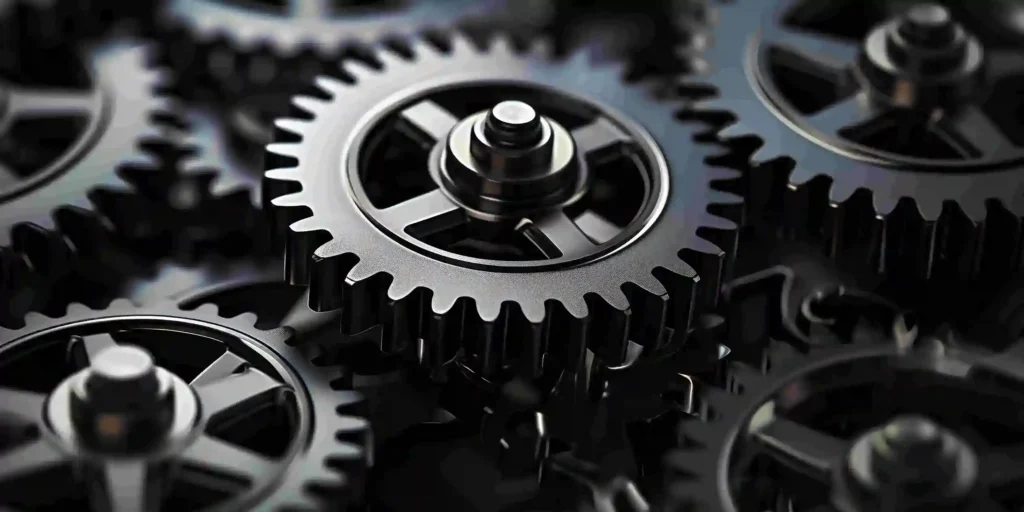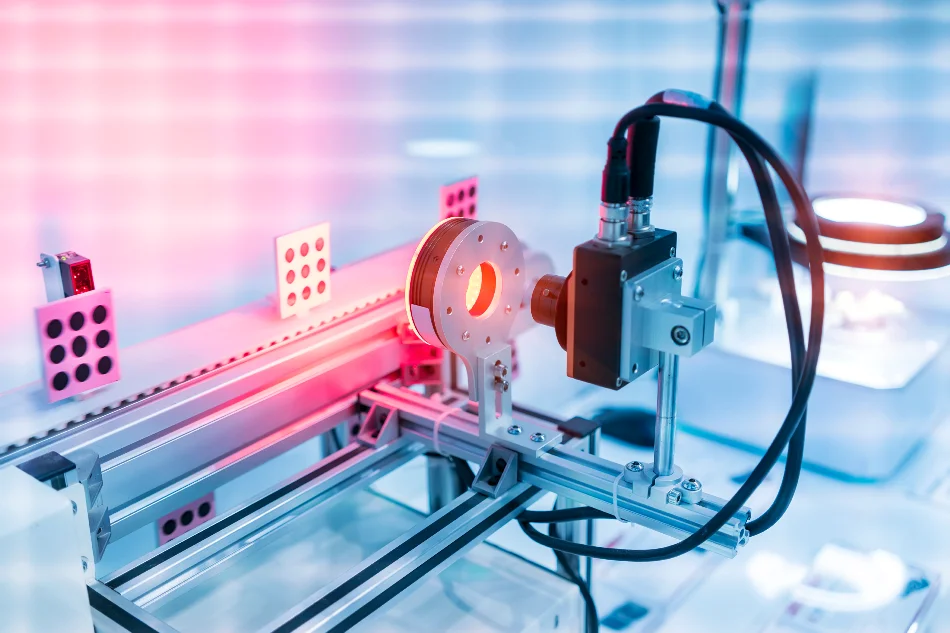Introduction
Gear manufacturing is at the heart of many industrial applications, powering everything from automotive engines to wind turbines. To meet the high demands of modern industries, gear manufacturers must ensure that their products are both efficient and precise. This is where visual inspection systems come into play. By automating and enhancing the inspection process, these systems help manufacturers maintain the highest levels of quality while boosting overall productivity.
The Role of Gears in Modern Industries
Gears are indispensable in a wide range of industries. From automotive to aerospace, manufacturing, and renewable energy, gears transfer motion and power within machinery, making them critical components. The performance and longevity of equipment often hinge on the quality of its gears. A slight defect in a gear can lead to machinery breakdowns, costly repairs, and operational downtime. Thus, the precision of gears is directly tied to the efficiency of industrial operations.
Challenges in Gear Manufacturing
Producing gears with high precision is no easy task. Gears must be manufactured to tight tolerances, and even the smallest defect can lead to major issues down the line. Traditional inspection methods, such as manual visual checks or basic mechanical tests, can be time-consuming and prone to human error. As the demand for higher quality gears grows, manufacturers need more advanced inspection techniques to ensure consistent precision.
Introduction to Visual Inspection Systems
Visual inspection systems are advanced tools that use imaging technology to automatically inspect and analyze the quality of manufactured products. In gear manufacturing, these systems capture high-resolution images of gears and use software to identify any defects or deviations from the desired specifications. This technology allows for faster, more accurate inspections compared to traditional methods, enabling manufacturers to maintain high standards of quality without sacrificing efficiency.
Types of Visual Inspection Systems
Manual Visual Inspection
Manual visual inspection involves a human operator examining gears for defects. While this method can be effective for simple inspections, it is time-consuming and may not catch subtle defects that require more detailed analysis.
Automated Visual Inspection Systems
Automated visual inspection systems, on the other hand, use cameras and sensors to capture images of gears, which are then analyzed by software algorithms. These systems can detect defects that may be missed by the human eye and do so at a much faster rate. Automated systems are especially useful in high-volume manufacturing environments where speed and accuracy are critical.
Comparison Between Manual and Automated Systems
While manual inspections rely on the experience and attention of the inspector, automated systems provide consistent, objective results. They can inspect hundreds of gears in the time it would take a human inspector to examine just a few. Automated systems also offer detailed data and analytics that can be used to optimize the manufacturing process.
Key Features of Visual Inspection Systems for Gear Manufacturing
High-Resolution Imaging
Visual inspection systems use high-resolution cameras to capture detailed images of gears, enabling precise analysis of surface features and dimensions.
Real-Time Analysis
These systems provide real-time feedback, allowing manufacturers to identify and address defects as they occur, rather than after the production process is complete.
Defect Detection and Classification
Advanced software algorithms can detect a wide range of defects, including cracks, chips, misalignments, and surface irregularities. The system can also classify defects by severity, helping manufacturers prioritize corrective actions.
Integration with Manufacturing Systems
Visual inspection systems can be integrated with other manufacturing systems, such as robotic arms and conveyor belts, to create a seamless, automated production line. This integration further enhances efficiency by reducing manual handling and ensuring continuous inspection throughout the manufacturing process.
How Visual Inspection Systems Improve Efficiency
One of the key benefits of visual inspection systems is their ability to streamline the inspection process. By automating tasks that were once manual, these systems reduce the need for human labor and minimize the risk of errors. This leads to faster production times and lower labor costs. Additionally, real-time analysis allows manufacturers to catch and correct defects immediately, preventing costly rework and reducing waste.
Enhancing Precision in Gear Manufacturing with Visual Inspection Systems
Precision is critical in gear manufacturing, and visual inspection systems play a key role in ensuring consistent quality. These systems can measure gears with incredible accuracy, detecting even the smallest deviations from the desired specifications. By catching defects early, manufacturers can prevent faulty gears from being used in machinery, thereby improving the overall performance and longevity of their products.
Cost Savings Through Visual Inspection Systems
Implementing visual inspection systems can lead to significant cost savings for gear manufacturers. By reducing the need for manual inspections, these systems lower labor costs. They also minimize waste and rework by catching defects early in the production process. Over time, the financial benefits of increased efficiency and reduced errors can far outweigh the initial investment in the technology.
Overcoming Barriers to Implementation
While the benefits of visual inspection systems are clear, some manufacturers may be hesitant to adopt the technology due to initial costs or integration challenges. However, many of these barriers can be overcome with careful planning and the right support. Training employees on how to use the systems effectively is crucial, as is partnering with a reliable vendor who can provide ongoing maintenance and updates.
Future Trends in Visual Inspection Technology
The future of visual inspection technology is bright, with advancements in AI and machine learning paving the way for even more accurate and efficient systems. AI-powered visual inspection systems can learn from previous inspections, improving their ability to detect defects over time. Additionally, advancements in imaging and sensor technology will enable even higher-resolution images and more precise measurements. Predictive maintenance, which uses data from visual inspections to predict when equipment will need maintenance, is also set to become a key trend in the industry.
Selecting the Right Visual Inspection System for Your Needs
When choosing a visual inspection system, manufacturers should consider factors such as the complexity of their gear designs, production volume, and budget. Customization options and scalability are also important, as manufacturers may need a system that can grow with their business. Partnering with a reliable vendor who can provide support throughout the implementation process is essential to ensure long-term success.
Conclusion
Visual inspection systems are transforming the gear manufacturing industry by improving both efficiency and precision. By automating the inspection process, these systems help manufacturers maintain high levels of quality while reducing costs and speeding up production times. As technology continues to evolve, visual inspection systems will become even more advanced, offering manufacturers new ways to optimize their processes and stay competitive in the market.
FAQs
1. How do visual inspection systems improve gear manufacturing?
Visual inspection systems automate the inspection process, reducing human error and increasing speed and accuracy. They detect defects early in the production process, ensuring high-quality gears and minimizing rework.
2. What are the common defects detected by visual inspection systems in gears?
Common defects include surface cracks, chips, misalignments, and irregularities in gear teeth. These systems can also detect dimensional deviations that may impact gear performance.
3. Can visual inspection systems be customized for specific manufacturing needs?
Yes, many visual inspection systems can be customized to meet the specific needs of different manufacturers. Customization options include tailored software algorithms, integration with existing manufacturing systems, and scalable hardware solutions.
4. What is the ROI of implementing visual inspection systems in gear production?
The ROI of visual inspection systems can be significant, with manufacturers seeing reductions in labor costs, waste, and rework. Over time, the financial benefits of increased efficiency and improved quality often outweigh the initial investment.
5. How do AI advancements impact visual inspection systems?
AI advancements are enhancing the capabilities of visual inspection systems by enabling them to learn from previous inspections. This leads to more accurate defect detection and improved overall performance over time.


